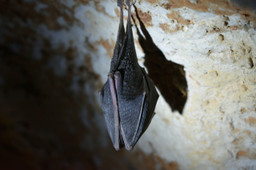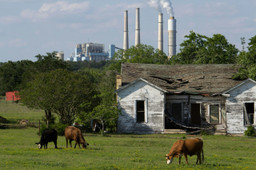
Could conserving biodiversity limit future pandemics?
According to the World Health Organization (WHO), the COVID-19 pandemic claimed the lives, directly or indirectly, of approximately 14.9 million people. Yet epidemics (unexpected increases in cases of a disease in a particular location) and pandemics (exponential growth of cases on an international scale) are not new. However, our species’ short memory means that, beyond the 33 million lives lost to HIV/AIDS between 1981 and 2022, other examples have been popularly forgotten. For example, 50-100 million died during the Spanish flu pandemic (1918-1920), and 15 million during the third plague pandemic (1894-1940) – just 130 years ago.
Further back, figures are less precise, but between 1347 and 1353, the Black Death killed around 50-60% of the population of Europe: around 50 million people in just six years. Between 1492 and 1600, ‘the Columbian exchange’ – named for the trade and European colonization which followed Christopher Colombus’ journeys across the Atlantic – saw flora and fauna, precious metals and other commodities, culture, technology, ideas, and humans themselves, transferred between the New World of the Americas and the Old World of Afro-Eurasia. Communicable human diseases also made the journey to the New World, where they wiped out 80 to 95% of the Indigenous peoples of the Americas – an estimated 48 million people.
In a globalized world, the introduction of diseases from one human population can still be devastating – “introduced diseases are the biggest killer of isolated tribal people”, such as in the Amazon.
Zoonotic diseases
But diseases are not only spread between humans: certain diseases, known as zoonoses or zoonotic diseases, can jump from animals to humans in the same way, can also jump from animals to humans via pathogens, infectious agents which include bacteria, viruses, parasites, or prions (protein particles).
As we will see, an increased prevalence of this kind of disease is inextricably linked to the notion that humanity exists at a remove from the natural world, or that that world poses a threat to us.
Examples of zoonotic diseases
Of every 10 infectious diseases in people, six are estimated to be zoonotic.
These include:
- Ebola (thought to originate in fruit bats)
- Salmonellosis (caused by Salmonella bacteria)
- Zika virus (hosted by monkeys but spread by a vector: an intermediate species which carries the disease pathogen without itself becoming ill; in this case, mosquitoes)
- Severe acute respiratory syndrome (SARS; originated in bats)
- Lyme disease (originated in small mammals and birds; transmitted by tick vectors)
- Middle East respiratory syndrome (MERS; originated in bats but transmitted by dromedary camels)
- Rabies (transmitted by mammals, but with 99% of cases in humans coming from dogs).
Though no longer zoonotic, HIV originated in chimpanzees and monkeys in West-central Africa.
In addition, “all five viral pandemics from 1918 through 2009 [Spanish flu, Asian flu, Hong Kong flu, Russian flu, and swine flu] can be traced to animals”, while an unreferenced estimate in an issue of British scientific journal Nature claimed that malaria, another zoonosis (caused by Plasmodium parasites carried by mosquito vectors), may have killed as many as 50-60 billion people throughout history. Five percent has since been offered as an alternative. As estimates of the amount of humans who have ever lived run to 108 or 117 billion, even this much more conservative estimate means that the deaths caused by malaria would number between 5.4 or 5.85 billion: more than five one-thousand-millions. By contrast, estimates of the amount of lives lost to war throughout human history run from ‘just’ 150 million to one billion.
What species causes zoonotic diseases and how are they transmitted?
Certain species are common causes of zoonoses due to the ease with which they interact with the human world – for example, mosquitos and bats transmit numerous diseases, as do birds (avian flu, salmonellosis, tuberculosis, Lyme disease).

Bats, in particular, “have adapted easily to anthropized environments such as houses, barns, cultivated fields, [and] orchards”, while “evolution has shaped their peculiar physiology and their immune system in a way that makes them resistant to viral pathogens that would instead successfully attack other species”. This combination makes them ideal reservoirs of diseases that can affect humans, including, The Lancet reports, being the likely source of COVID. Pangolins were initially thought to have acted as an intermediate host between bats and humans, but it has since been suggested that a range of other species may be more probable: mink, rabbits, raccoon dogs, civets, ferret badgers, snakes, or even domesticated cats.
Meanwhile, not only do zoonoses account for a large proportion of the infectious diseases suffered by humans, outbreaks are increasing, having “more than tripled each decade since the 1980s”. Upwards of 65% of these diseases originated in animals, while, according to the US Centers for Disease Control and Prevention (CDC), around 75% of all new or emerging diseases which can infect humans have their origins in animals. A study from the University of California, Davis, suggests that of around 1.67 million undescribed viruses which exist within birds and mammals, as many as half “have the potential to spill over into humans”.
These spillovers can occur in any context involving contact with or consumption of animals, animal products, or animal derivatives. Therefore, keeping pets, farming, trade, and hunting can all provide an opportunity for disease to cross from animals to humans, through the air, saliva and bites, or via a vector. As such, zoonotic diseases have been able to spread to humans since our ancestors began to domesticate animals (the first such species being dogs, around 15,000 years ago).
How is environmental change fueling this problem?
As humanity continues to affect widespread environmental change across the world, it is becoming clear that those changes are responsible for the increased frequency of new zoonoses.
Upwards of 77% of the Earth’s land surface (aside from Antarctica), and 87% of the ocean, has been directly changed by human activities. This means that only 23% of that land surface and 13% of the ocean, can still be defined as wilderness. And that amount has seen a 10% reduction in just the past 20 years.
Such massive, accelerated changes cannot fail to bring about proportionate consequences; an increased incidence of disease transmission from wildlife to humans is one.
The acknowledgement of this relationship has given rise to the discipline of planetary health, a concept launched by the Rockefeller Foundation–Lancet Commission on Planetary Health in 2015, which aims to address “the health of human civilisation and the state of the natural systems on which it depends”. This concept provides a framework for understanding how anthropogenic environmental change contributes to the spread of zoonotic disease: “By unsustainably exploiting nature’s resources, human civilisation has flourished but now risks substantial health effects from the degradation of nature’s life support systems in the future.”
Causes of this degradation, and therefore of the correspondingly increased rate of zoonotic disease emergence, include:
- High demand for animal protein
- Unsustainable agricultural practices
- Climate change
- Land degradation
- Wildlife exploitation
- Resource extraction
- Land-use change
- Intensive livestock production
- Wildlife trade
- Invasive species
- Pollution
- Changes in watercourses
- Rapid urbanization
- Population growth
- The globalization of agriculture, commerce, and human travel.

Deforestation in particular “is a major driver of emerging infectious diseases”. By bringing humans into contact with wild spaces, activities like road building, agricultural development on wildland, mining, hunting, and logging – which frequently accompany or are enabled by deforestation – cause exposure to the pathogens which those wild spaces harbor. In the words of science, nature, and travel writer David Quammen, “We invade tropical forests and other wild landscapes […] We cut the trees; we kill the animals or cage them and send them to markets. We disrupt ecosystems, and we shake viruses loose from their natural hosts. When that happens, they need a new host. Often, we are it.”
Penetrating ever more deeply into forests creates more and more opportunities for diseases to cross over from animals into humans. This process – known as virus spillover – not only affects humans directly, but can occur via livestock exposed to wildlife. Either way, the increased proximity between humans and wildlife (or livestock and wildlife) allows “new strains of infectious diseases to thrive”.
“Vanishing the boundaries between wild and human entities at [such] an unprecedented scale” compresses animal habitats, while locating houses or sheds on the fringes of forests attract insects and provide shelter for bats. Habitat loss therefore crowds the surviving species together, causing them to mix with one another, and with humans, in unprecedented combinations. What’s more, the species which proliferate in these disrupted conditions – for example, rats and bats – are “the species most likely to transmit new diseases to us” (while also being “the best hosts for existing diseases”).
More specifically, trade in illegal wildlife – a multibillion-dollar industry which has become increasingly destructive and increasingly well organized in recent years – has a particular connection to the transmission of zoonoses; though disputed, it’s likely that COVID-19 originated in a Wuhan wet market. Wet markets sell fresh foods, but in this case that included “numerous wild animals, including live wolf pups, salamanders, crocodiles, scorpions, rats, squirrels, foxes, civets and turtles”. Since the outbreak of the pandemic, trade and consumption of wild animals was banned by the Chinese government, yet similar markets are mainstays elsewhere in Asia and in west and central Africa. There is also an argument to be made for illegalization only driving the practice underground.
In addition, warmer temperatures caused by climate change are already beginning to exacerbate the spread of diseases such as dengue fever or West Nile virus (which replicates more quickly in higher temperatures). For this reason, the price of climate change will continue to be predominantly borne by countries in the global south, where populations are unable to afford protections against disease. This warming is also driving shifts in geographic ranges; mosquitos, for example – vectors for various diseases – are increasingly able to find suitable environments both north and south of their typical tropical ranges.
What can be done to stop pandemics?
By continuing to wreak destruction upon the natural world, “the probability of pandemics is expected to increase in the coming decades”. The worst-case scenario would be the rise of a disease which married the mortality rate of one as deadly as Ebola (with an average mortality rate of around 50%, climbing to 90% in certain circumstances) with the contagiousness of, say, measles (where one infected person will infect nine out of 10 people nearby).
In order to mitigate this future, it’s first necessary to correct the mistaken assumption that humanity is threatened by nature. While threats do exist in the wild, it is “human activities that do the real damage”, by making “the health risks in a natural environment […] much worse when we interfere with it”.
This requires the understanding that humans are not separate from nature; that we are instead two parts of an interconnected system, and that, “like all systems, we need to understand how it works so that we don’t push things too far and face increasingly negative consequences”.
For this reason, conservation and the mitigation of biodiversity loss need to be accepted as being crucial for the protection of public health; we “need nature to survive, […] [so by] protect[ing] nature, we are also protecting ourselves”. This means tackling not only deforestation, but the poor regulation of agricultural surfaces, and the mismanagement of urban growth.
Addressing these consequences of our actions is critical because, by comparison to just a few decades ago, new diseases are as likely to affect urban environments as rural ones, because “we have created densely packed populations where alongside us are bats and rodents and birds, pets and other living things”. In other words, the perfect opportunity for pathogens to jump from species to species, evolving as they go. Enabling the spread of disease in this way has become “a hidden cost of human economic development”.
A further cost is that pandemics can cause feedback loops which result in the emergence of additional zoonoses – a dynamic which must be addressed. By causing severe economic disruption, pandemics drive the poverty that can leave “people […] no choice but to continue pushing into natural habitats and continue relying on wildlife populations for subsistence”. It’s important to appreciate that, for these reasons, certain populaces may be unable to avoid “driv[ing] conditions favourable to zoonoses”. For example, rural communities in Guinea, West Africa, may have inadvertently caused the 2013–2016 Ebola epidemic which killed more than 11,000 people. In order to survive, they cleared forests to create farmland, where an 18-month-old child is believed to have caught the virus from bats and become ‘patient zero’.
Similarly, those working in areas of active land-use change are at risk of direct contact with a broad range of wildlife: ideal conditions for zoonoses’ emergence. Illegal logging in tropical forests in, for example, the Amazon and Congo basins “typically offer poor working conditions, forcing crews to work without access to enough food and to rely on wild resources instead”.
However, it would be reductive and mendacious to lay the blame for zoonosis-enabling activity on the global south. As a result of logging, fires, and agricultural expansion, only around 15% of all forests on the planet – areas crucial to sustaining biodiversity – “remain intact”; this is nothing but ecocide on a catastrophic scale, enabled by systemic global extractivism.

Behaviors must therefore also be changed in the global north, whose “demand for wood, minerals and resources” constitutes a large part of humanity’s “continued assault on the environment”.
This assault makes it imperative that we “fix [our] broken relationship with nature”.
Managing future pandemics by fixing our broken relationship with nature
Ways of doing this include conserving wildlife by:
- Enforcing restrictions on poaching
- Dealing with the conflict between wildlife and livestock and reducing retaliation by farmers. This can be done by introducing compensation for farmers who lose livestock to encroachment by predatory wildlife
- Reducing deforestation and forest degradation
- Restricting the global wildlife trade
- Reforming unsafe livestock farming practices.
It can be hoped that, by intensifying awareness of the correlation between these practices and the risks they cause to public health, COVID will continue to increase the availability of ”more resources and a more coordinated effort to address these issues”.
Further actions required for managing the “certainty” of future pandemics include:
- “Promot[ing] research on the interactions between climate change, biodiversity, food production, and EID [emerging infectious disease]”
- Increasing “global biosecurity […] [by] bolster[ing] the provision of health care in developing countries”
- Overhauling urban infrastructure, planning, and development (especially in the context of low-income/informal settlements).
It’s also crucial to make the realities of zoonoses’ transmission understood by “hunters, loggers, market traders and consumers”, since – as in the case of Guinea and the West African Ebola epidemic – “spillovers [can] start with one or two people”.
A small but significant note of optimism is that policymakers take note of a study which states that “primary pandemic prevention actions” (such as reductions of deforestation) would cost just 1% of the US$2 trillion estimated as “the yearly cost of future pandemics”. (“Emerging diseases have [already] had direct costs of more than US$100 billion” over the last 20 years alone.)
Human, animal, and environmental health “are one and the same” – yet they are out of balance, and “that imbalance [is now being] reflected in our own bodies”. However, by safeguarding the natural world, it may be possible to prevent further escalations in the rates of zoonotic outbreaks.
Featured photo by Annie Spratt on Unsplash
Earth.fm is a completely free streaming service of 1000+ nature sounds from around the world, offering natural soundscapes and guided meditations for people who wish to listen to nature, relax, and become more connected. Launched in 2022, Earth.fm is a non-profit and a 1% for the Planet Environmental Partner.
Check out our recordings of nature ambience from sound recordists and artists spanning the globe, our thematic playlists of immersive soundscapes and our Wind Is the Original Radio podcast.
You can join the Earth.fm family by signing up for our newsletter of weekly inspiration for your precious ears, or become a member to enjoy the extra Earth.fm features and goodies and support us on our mission.
Subscription fees contribute to growing our library of authentic nature sounds, research into topics like noise pollution and the connection between nature and mental wellbeing, as well as funding grants that support emerging nature sound recordists from underprivileged communities.

